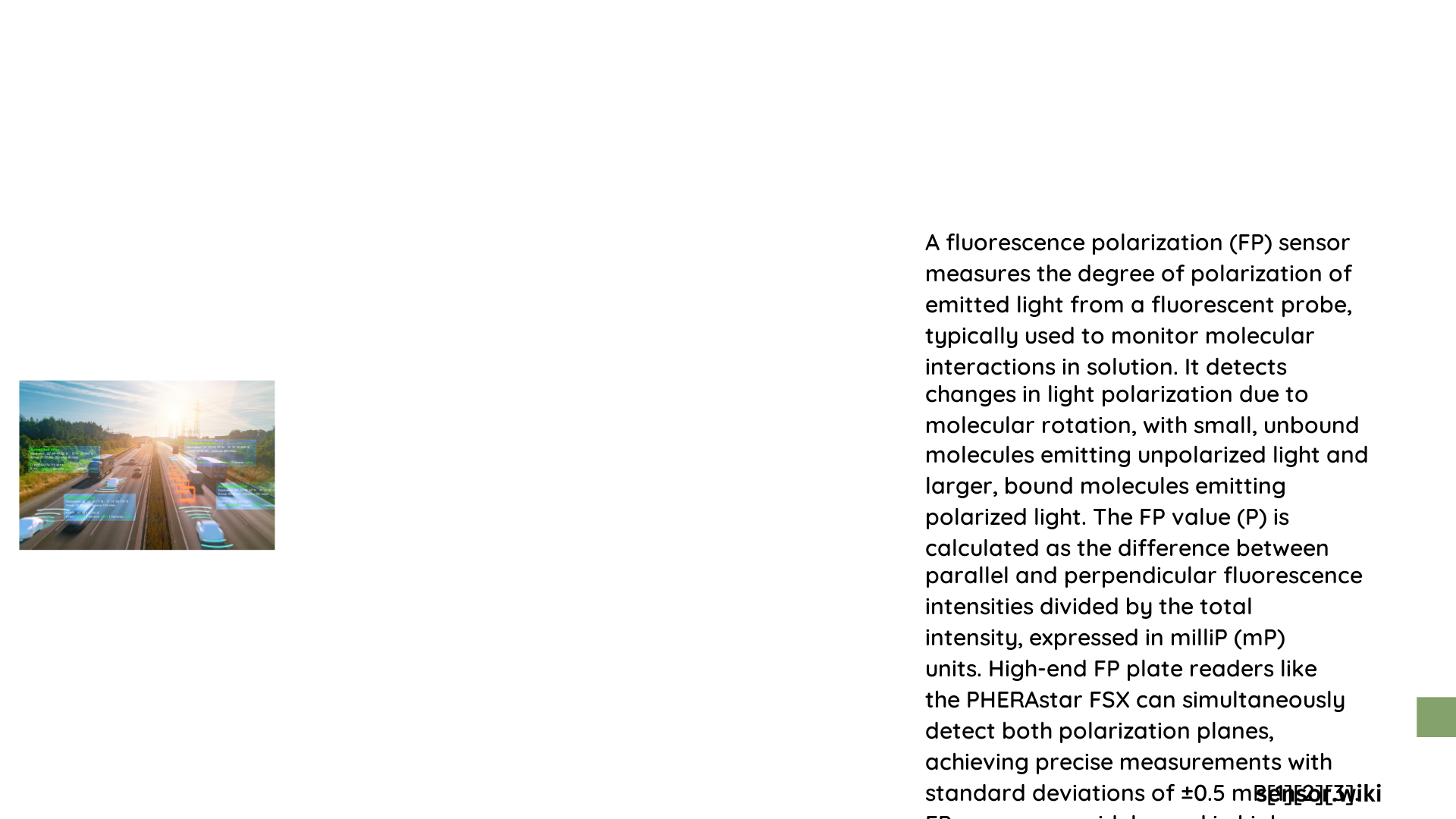Fluorescence polarization sensors represent a sophisticated analytical technique that measures molecular interactions by tracking the rotational diffusion of fluorescent molecules. These advanced sensors enable precise detection of biomolecular binding events, protein-protein interactions, and complex biochemical processes with exceptional sensitivity and real-time monitoring capabilities across multiple scientific domains.
What Are Fluorescence Polarization Sensors?
Fluorescence polarization sensors are sophisticated analytical instruments designed to detect molecular interactions by measuring the rotational movement of fluorescently labeled molecules. When excited by polarized light, molecules with different molecular weights exhibit distinct polarization characteristics, allowing researchers to quantify complex biochemical interactions.
Key Technical Characteristics
| Parameter | Specification |
|---|---|
| Sensitivity Range | ±2 millipolarization (mP) |
| Measurement Precision | 10-300 mP |
| Excitation Wavelength | 370-660 nm |
| Detection Accuracy | ±0.002 polarization units |
How Do Fluorescence Polarization Sensors Work?

Fluorescence polarization sensors operate through a sophisticated mechanism involving several critical steps:
- Molecular Labeling
- Attach fluorescent molecules to target biomolecules
-
Select appropriate fluorophores with specific spectral properties
-
Light Excitation
- Apply polarized light at specific wavelengths
-
Excite fluorescent molecules in the sample
-
Rotational Analysis
- Measure fluorescence emission on parallel and perpendicular planes
- Calculate polarization based on molecular rotation rates
What Are the Primary Applications?
Fluorescence polarization sensors find extensive applications across multiple scientific domains:
- Pharmaceutical Research
- Drug-target interaction studies
- Protein binding assays
-
Enzyme kinetics investigation
-
Medical Diagnostics
- Antibody-antigen detection
- Hormone level measurements
-
Infectious disease screening
-
Biotechnology
- Protein-protein interaction mapping
- Receptor binding studies
- Cellular signaling pathway analysis
What Challenges Exist in Fluorescence Polarization Sensing?
Researchers must address several critical challenges:
- Environmental Sensitivity
- Temperature fluctuations
- Solvent viscosity variations
-
pH-dependent molecular interactions
-
Instrumentation Limitations
- High-precision optical components
- Complex calibration requirements
- Signal-to-noise ratio optimization
What Future Developments Are Anticipated?
Emerging trends in fluorescence polarization sensor technology include:
- Miniaturization of detection systems
- Enhanced computational algorithms
- Integration with artificial intelligence
- Improved multi-parameter sensing capabilities
Technical Considerations for Optimal Performance
To maximize fluorescence polarization sensor effectiveness, researchers should:
- Maintain consistent environmental conditions
- Use high-quality fluorescent probes
- Implement rigorous calibration protocols
- Select appropriate wavelength ranges
Conclusion
Fluorescence polarization sensors represent a powerful analytical technique with broad scientific applications. Continuous technological advancements promise even more sophisticated molecular interaction detection capabilities in the future.
